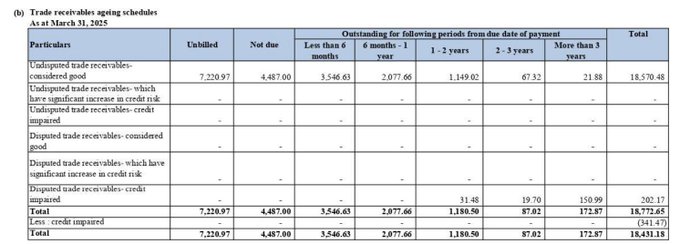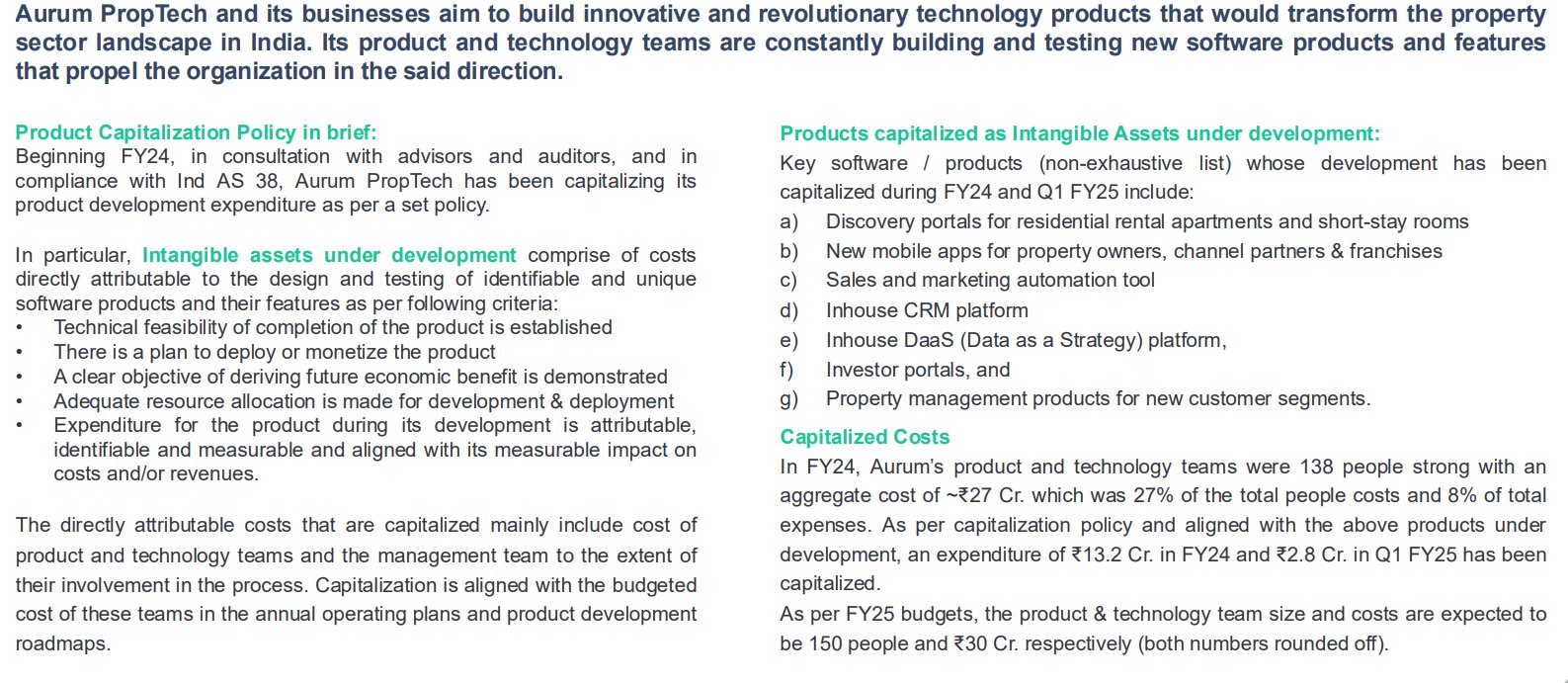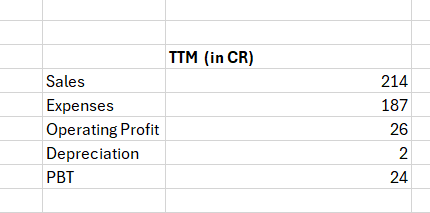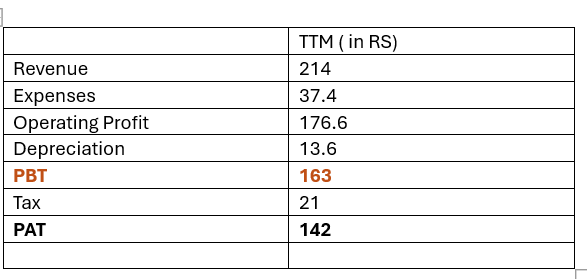Pace Digitek Ltd ( CMP Rs 217)
Business summary
Pace Digitek operates across telecom, energy and ICT segments — manufacturing telecom power/infra equipment (DC supplies, SMPS, power interface units, rectifier modules, AMF panels, batteries), and delivering EPC and O&M services. They are also into EV chargers and battery energy storage (BESS) projects through subsidiaries.
Pace Digitek’s legacy lies in building the invisible backbone of India’s digital economy. From installation of telecom towers, fiber optic cable networks, to managed services, the company has been a silent enabler of India’s 4G and now 5G rollout.
-
The company has manufacturing facilities in Bengaluru (Kumbalgodu / Mysore Road).
Please watch latest SOIC video release recently on BESS sector deep analysis . They have covered even Pace Digitek in sector but not in depth.
Investor Presentation Highlights

Customer concentration
-
Extremely high customer concentration: top 3 customers accounted for ~89% of revenue in FY2025 (top 10 ~96%). That makes revenue highly dependent on a handful of customers.
-
Heavy reliance on public sector / government contracts (tenders): 96.17% of revenue in FY2025 was from public-sector customers. Tender-based work is price-sensitive and can compress margins.
✅ Key Capabilities
-
Manufacturing facility for BESS
-
PDL has inaugurated a manufacturing unit at Bidadi, Karnataka through its subsidiary Lineage Power Private Limited, with an annual capacity of 5 GWh.
Lineage Power, a subsidiary of Pace Digitek, has inaugurated a 5 GWh annual capacity Battery Energy Storage System (BESS) manufacturing facility in Bengaluru in June 2025. This automated plant will produce utility-scale 5 MWh DC blocks with a 2.5 MW power conversion system and is a significant step in India's goal to achieve 500 GW of non-fossil fuel capacity by 2030.
-
The facility is intended to produce containerized battery energy storage systems (BESS) — which are relevant to the “liquid-cooled containerized systems” mention.
-
-
Product offering: liquid-cooled containerised BESS
-
PDL (via Lineage) lists “manufacturing liquid-cooled, containerised lithium-ion battery energy storage systems (BESS)” as part of its capabilities.
-
These systems include modular racks (12 standard racks per container), Power Conversion Systems (PCS), Energy Management Systems (EMS) and safety / thermal‐management features (including for high temperature environments) as per disclosures in DHRP.
-
-
Certifications and standards compliance
-
Compliance with global safety and reliability standards such as UL 1973, UL 1642, UL 9540A, IEC 62619:2022 for their BESS offering.
-
This suggests their liquid‐cooled containerized BESS are intended to meet international benchmarks, which is a positive capability indicator.
-
-
End‐to‐end solution capability
-
Beyond manufacturing, PDL offers the full stack: design, supply, installation, commissioning, and services/maintenance (AMC, O&M) of energy storage and solar + BESS projects
-
That means the liquid‐cooled containerized systems aren’t simply standalone product sales — they form part of a project delivery capability (which is a strength).
-
-
Thermal / environmental readiness
The mention of “liquid-cooled” suggests their systems are designed for Indian/local high ambient temperature environments (which is a challenge) and for high density battery racks in containers.
Given their historical strength was telecom power equipment and service, the transition into large scale BESS & containerized systems is significant. Execution risk remains (project delays, cost overruns, technology issues).
It would be relatively natural for Pace Digitek to extend into data-center-grade liquid cooling in future even though current liquid-cooled containerized systems is for BESS.
Many companies in similar positions (like Delta, Vertiv, Huawei Energy) have successfully made that move.Pace Digitek’s current liquid-cooled containerized systems are for BESS, but the underlying design and cooling expertise make it technically feasible to adapt them for edge or modular data-center deployments. They’d just need to integrate server, networking, and IT-rack cooling subsystems, which would likely require a technology or OEM partnership.So, Pace Digitek is not just BESS and power but even can become Data Center play .
5 GWh BESS Manufacturing Facility – A Game Changer
Pace Digitek acquired Lineage Powertech, a technology firm with focus on energy systems from global giant GE in 2014.
Following some info sourced from Article
In June 2025, Lineage commissioned its 5 GWh BESS manufacturing plant in Bidadi, Karnataka.This facility is designed to produce:
The goal of Pace Digitek to own the entire value chain from pack assembly to system integration, while gradually reducing dependence on foreign cells and control software.How BESS Can Transform Pace Digitek
- Higher Margin Business: BESS projects command better pricing and margins.
- New Market Verticals: Energy, EV infra, commercial & industrial clients, data centers, DISCOMs.
- Tender Participation: Rising interest in grid-scale BESS tenders (SECI, NTPC, etc.).
- Brand Transition: From infra service vendor to a cleantech OEM.
- Cross-Sell Potential: Telecom clients like Jio, Airtel, BSNL may become BESS clients.
Some interesting key points
- Supply chain main challenge. Margin will depend on handling Supply chain . Creating ecosystem for indigenous sourcing.
- Company claimed first company to make BESS localized in India ( except Cells)
- Plan to increase BESS capacity to 30 GW from current 5 GW in next 5 years .
- Can do lithium ion cell manufacturing in next 3-4 years if favorable policy from Govt.
- Lineage Power purchased from GE in 2014 . So , it has good technical capabilities .
- Recently received 1159 crores BESS from Solar Energy Corporation of India Ltd (SECI) for BESS Supply for 600 MW/1200 MWh BESS along with 10 (ten) years of service and Maintenance. Please note this complete turnkey order , not just standalone BESS.
- It has already received 1159 crores BESS orders while lot of other companies are still considering to setup BESS plants. Clear First mover advantage .
8. Even though this loan is closed and taken before listing but why to take loan from related party at 50% per year rate . Sonu Tujhe Mere Pe Bharosa Nahi kya 😆.
Watch the following video of BESS plat inauguration .
Not apple to apple comparison peers available but you consider the following.- HFCL
- Exicom Tele-Systems Ltd
- Bondada Engineering Ltd
They are reducing dependency on few customers . They have signed MOU with Onix renewable and Advait Energy Transitions Limited during BESS inauguration plant itself .Also Solar Energy Corporation of India Ltd is new client for BESS order.
As per my understanding current order book is around 9000 crores including latest two orders .
Around 3500 crores from telecom while rest is from Energy sector .
Negative
1) Couple of minor compliance issues and some red flags in annual report .
2) Last year Salary increase of management is huge and Mrs Padma ( relative of management), age 54 , undergraduate , getting 2 cr salary raises investors eyebrow . Not sure how much real value addition she does
3) High trade receivable due to Govt telecom contracts like Tejas.
4) Cash flow issues due to high trade receivables .Above tables contains Unbilled and Not due columns .
Unbilled means invoice generated but due date in future .
Not Due means invoice is also not generated yet , It means there is some time gap between booking revenue in account system and generating invoice as per term of contract. Around 120 cr amount is greater than 1 year that is risk.
If you look only trade receivables then figure looks worrisome but when you look complete picture including Inventory Days,Receivable Days,Payable Days and Cash Conversion Cycle then it looks amazingly good manage company . in fact it has better Cash Conversion Cycle than FMCG companies like HUL . Not sure how they are able to do it . Payable days of of 459 days is unbelievable .
Pace Digitek.
HUL
5 GW BESS capacity can generate standalone revenue of 1500-1800 crores per year but the goal of Pace Digitek to own the entire value chain from pack assembly to system integration, while gradually reducing dependence on foreign cells and control software. First order of 1159 crores from Solar Energy Corporation of India Ltd for 600 MW since it is turnkey/EPC order , if we do math based on this figure then 5GW capacity at full utilization can give 8000 cr EPC/Turnkey orders . It is huge . If they succeed in it then they have plan for 30 GW BESS capacity .Conclusion : BESS is surely growing sectors for next decade , govt policies and push will decide margin .
Disclaimer : Please treat this post as starting point of your research and not conclusion to invest in any discussed stock. As always , please take the advice of a SEBI qualified financial adviser which I am not .




















